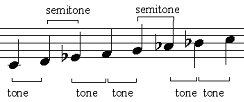Introduction To Music Theory And Notation
Although it is not essential that an electronic musician be able to read sheet music, such an ability is a great advantage – particularly when creating music for film or TV. In fact, the more comprehensive your understanding of music is, the more sophisticated your work can potentially become. Modern music software gives everyone the chance to sit down, tweak a few filters, scatter a few notes in a matrix and drum up a new tune in a very short time; however, the detailed application of knowledge and experience is what makes raw ideas listenable and interesting.
The Music Theory Guide provides some basic knowledge of the structure of music, including types of notes (minims, quavers, crotchets et al), bars and beats, tempo and scales. Time signatures are introduced, as are the notations for emphasis and techniques for modifying note duration. This is a starting point for anyone who would like a quick introduction to the “essentials” of music theory; of course, it can take a lifetime of study to master the subject in its entirety, but even a simple grasp of such rudiments as presented here can improve one’s ability to interpret and organise musical projects. Knowing which elements work well together, both musically and sonically (as well as understanding why it works), can greatly improve workflow and lead to much more coherent and pleasing results.
